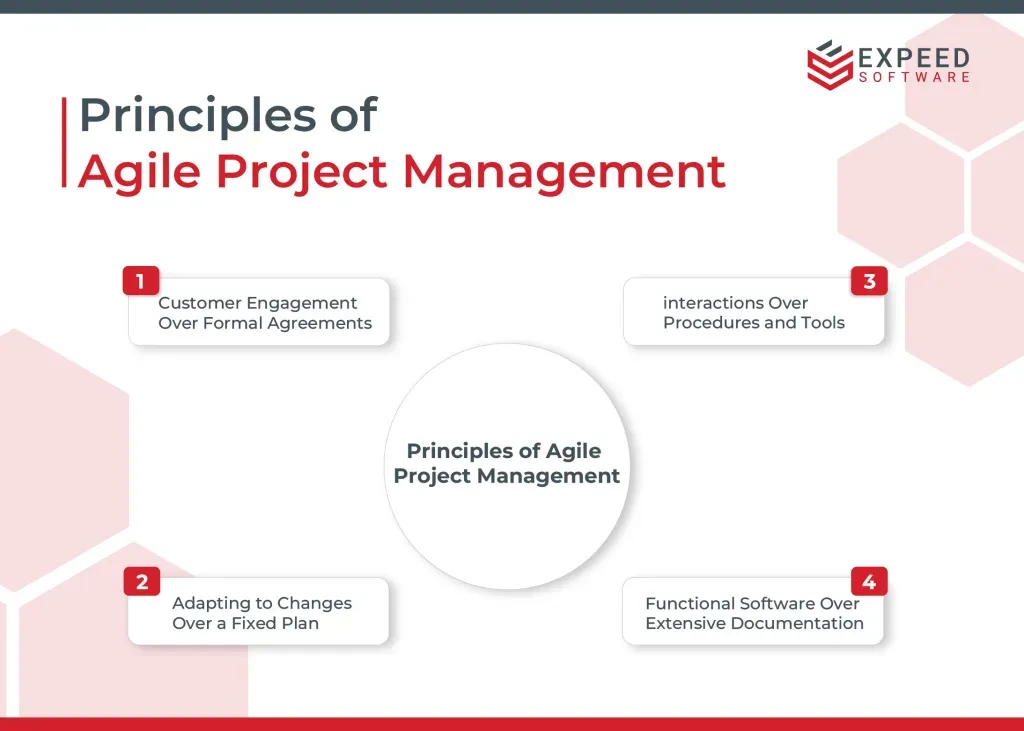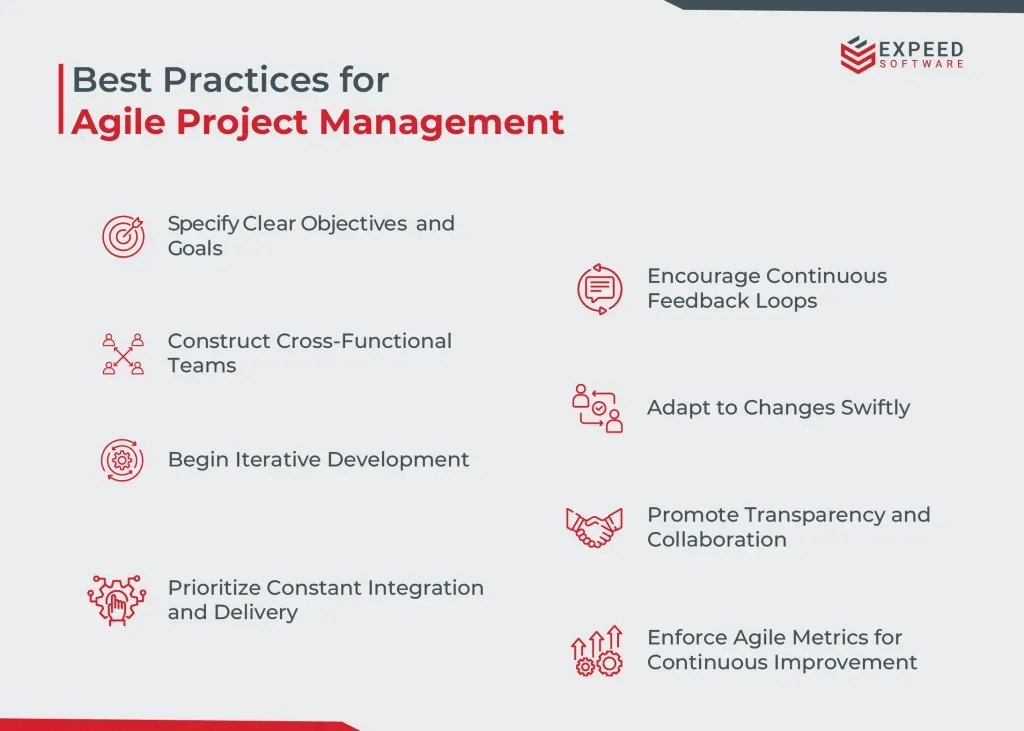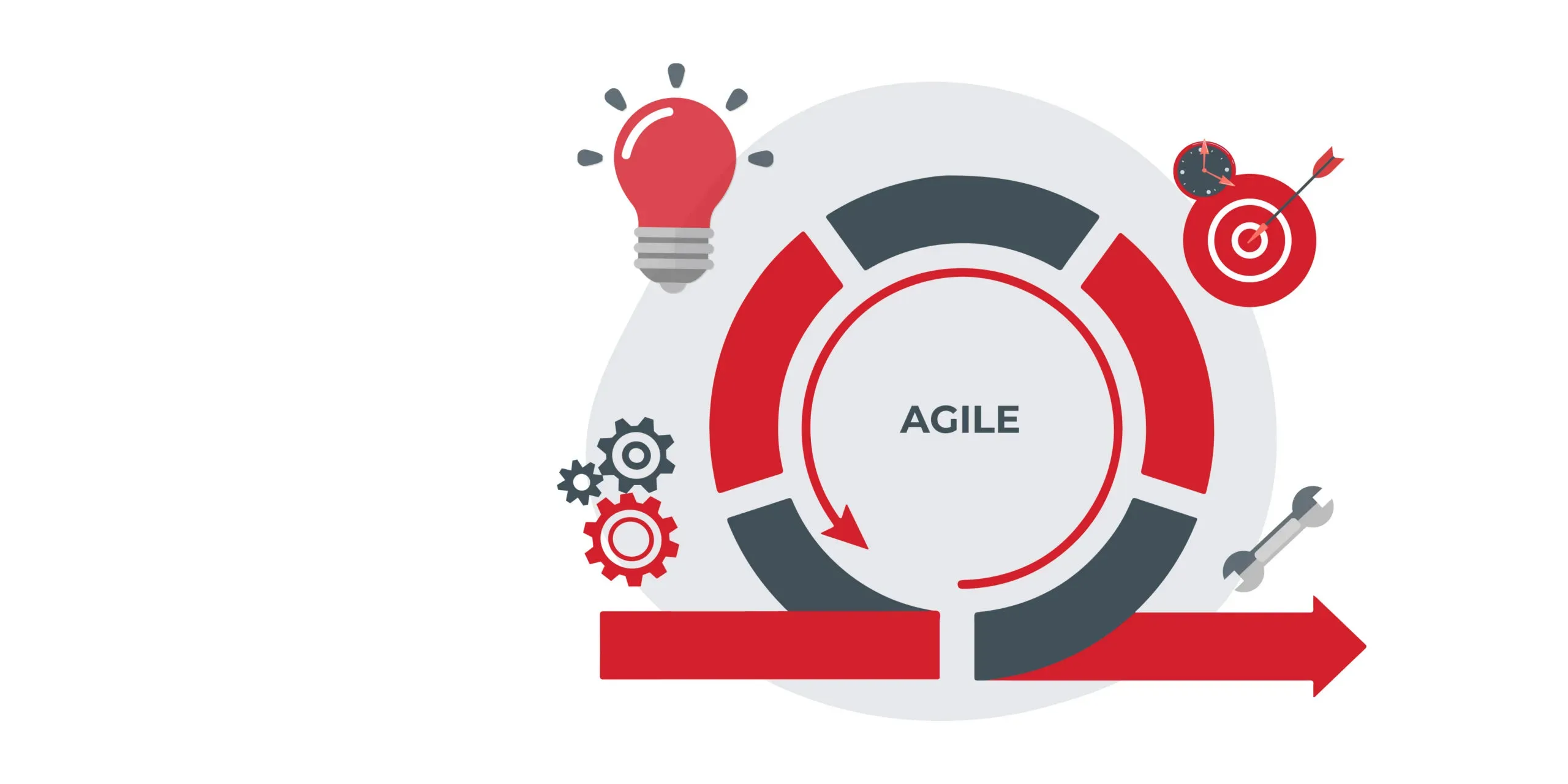For the past two decades, Agile methodology has become an integral part of software development industries. In fact, Agile Project Management has revolutionized how business teams approach software development. It prioritizes flexibility, collaboration, and constant improvement. Hence, teams can quickly adapt to changing requirements and drive values incrementally. Whether you are new to Agile, or looking to revise your practices, the underlying article covers best practices, tips, tools, and insights. This will help elevate your Agile Project Management journey.
Defining the Term: Agile Project Management
Agile Project Management includes iterative development methods, periodic audits, and sound collaboration among cross-functional groups. The thing that differentiates Agile methodology from traditional waterfall techniques is that it breaks the projects into smaller chunks known as sprints. A typical sprint would take 1-4 weeks to complete. The resultant version is subject to feedback and product increments. This iterative approach lets teams respond to feedback, lower risk factors, and deliver value early and often.
4 Core Values of Agile Project Management

- Customer Engagement over Formal Agreements
Prioritize stakeholder collaboration to understand their preferences and requirements throughout the project development lifecycle.
- Adapting to Changes Over a Fixed Plan
Make changes to evolving requirements to maximize the competitiveness and adaptability of the project.
- Interactions Over Procedures and Tools
Give more focus on team dynamics and transparent communication to drive project success.
- Functional Software Over Extensive Documentation
Provide working software that meets customer requirements rather than focusing only on documentation.

Best Practices for Agile Project Management
1. Specify Clear Objectives and Goals
Tip: Have a clear vision for your project and set SMART (Specific, Measurable, Achievable, Relevant, Time-bound) objectives, delivering clarity and focus.
Tool: Use collaborative tools like Trello or Jira to manage backlog and track goals, ensuring the all-required transparency and cross-team alignment.
2. Construct Cross-Functional Teams
Tip: Form teams with diverse skills like developers, testers, and designers, where you can have shared ownership of project objectives.
Tool: Use tools like Asana or Monday.com that enable robust communication, task allotment, and progress tracking with cross-functional teams.
3. Begin Iterative Development
Tip: Break projects into shorter sprints to provide incremental value and acquire feedback early from stakeholders.
Tool: Agile boards integrated into tools like Scrumwise or Azure DevOps help visualize workflows and manage sprints more effectively. This helps enhance team productivity and responsiveness.
4. Prioritize Constant Integration and Delivery
Tip: Execute automated testing and deployment channels to ensure rapid delivery and consistency in software quality.
Tool: Gitlab and Jenkins CI/CD give sound capabilities for automating building tasks, conducting tests, and deploying applications across distinct environments.
5. Encourage Continuous Feedback Loops
Tip: Run regular sprint assessments or reviews to collect feedback, spot areas of improvement, and refine project tasks iteratively.
Tool: Platforms like Microsoft Teams or Slack foster sound communication, feedback exchange, and decision-making across team members. This helps enable a culture of continual improvement.
6. Adapt to Changes Swiftly
Tip: Keep a flexible mindset and adapt to changing conditions based on stakeholder feedback, market shifts, or evolving requirements.
Tool: Kanban boards in Kanbanize or Leankit support visualizing workflows, handling task priorities, and responding to shifts in the scope and priorities of the project.
7. Promote Transparency and Collaboration
Tip: Utilize collaborative platforms and tools to maintain progress transparency, conditions, and decision-making processes.
Tool: Platforms like Google Workspace and Confluence encourage document sharing, team collaboration, and knowledge management. This enables proper data exchange and cross-alignment across distributed teams.
8. Enforce Agile Metrics for Continuous Improvement
Tip: Identify key Agile metrics like velocity, cycle time, and sprint burndown to calculate team performance, detect bottlenecks, and optimize project workflows.
Tool: Agile reporting and analytics tools such as Sprintly or Agile Central provide information on project health, potential areas of refinement, performance trends, and patterns. This supports data-driven decision-making and steady improvement initiatives.
Recommended Agile Project Management Tools
JIRA Software: Jira Software is a popular and versatile Agile Project Management tool highlighting Kanban boards, Scrum boards, and enhanced reporting capabilities. These features help streamline Agile workflows and improve team collaboration.
Trello: Trello is a visual kanban-style Agile Project Management tool that lets teams manage tasks, prioritize work, and collaborate in real-time. The tool fosters Agile Project Management best practices of adaptability and transparency.
Asana: Asana is a project management software curated for Agile teams, delivering collaborative features, intuitive task tracking, and tailored workflows. The Agile tool helps manage projects effectively.
Monday.com: Monday.com is a work operating system with Agile traits for task management. The tool also features sound project tracking and team collaboration, supporting Agile Project Management with visual project planning capabilities and customizable workflows.
Azure DevOps: Azure DevOps is an integrated suite of tools helping Agile Project Management. It includes features like version control and CI/CD pipelines, allowing teams to plan, build, test, and deploy efficient software within Agile frameworks.
“The most broadly used Agile methodology is Scrum. Seventy-five percent of respondents indicated they use Scrum or a Scrum-hybrid in survey results included in the 14th Annual State of Agile Report.”
Challenges and Trends in Agile Project Management
Agile Project Management, while being adaptive and transformative, has its own set of challenges. Also, there are evolving trends that influence its application across organizations. Let us get into more detail about these challenges and trends.
Agile Project Management Challenges
- Resistance to Change: Businesses conditioned to traditional techniques might encounter cultural resistance and reluctance to welcome Agile practices.
- Scaling Agile: Enforcing Agile at scale across businesses or large teams needs keen planning, alignment, and sound coordination of processes.
- Faint Understanding of Impact on Overall Business Goal: Executing projects with Agile methodology without understanding it isn’t enough to drive the desired outcome. Strategic alignment is essential for achieving sustainable business growth.
- Rushed Testing Cycles: Sprints can cause rushed testing cycles, risking unidentified defects and errors due to the focus on timelines over detailed testing.
- Holding Discipline: Keeping balance with flexibility and structure can be difficult. Teams need to adhere to Agile Project Management best practices and principles while guaranteeing consistent delivery and quality.
- Limited Agile Skill: The scarcity of qualified Agile talent bounds businesses from fully capitalizing on the advantages of Agile methodology.
Agile Project Management Trends
- Agile Beyond IT: Agile Project Management methodologies are largely adopted beyond software development, including HR, marketing, and operations. This fosters innovation and responsiveness.
- Remote Agile: The remote work culture has truly fueled the adoption of Agile Project Management best practices. Teams are utilizing digital tools and platforms for communication and collaboration.
- AI and Automation: Integrating automation tools and artificial intelligence enhances Agile Project Management best practices. It enables predictive analysis for sprint planning and facilitates automated testing and deployment.
The Future of Agile
With rising competition and shrinking time to market, Agile paves the way for innovative solutions with multiple benefits and limited drawbacks. As the modern digital space requires faster, collaborative, and flexible outputs, more and more businesses are on the path of Agile Project Management. According to Forbes Insights, 83% of executives agree that Agile methodology provides a competitive edge in their industry. Agile application across industries and its alignment with the benefits of digital workspace models indicate that these rates will persistently grow across global industries.
Conclusion
Agile Project Management denotes more than just a methodology; it represents a project approach or culture that prioritizes collaboration, adaptability, and driving constant values. By following Agile Project Management best practices, executing practical tips, and utilizing Agile tools, teams can manage project tasks effectively and swiftly. This helps achieve project success in changing and competitive landscapes.
At Expeed Software, we offer robust Agile development solutions, providing the expertise and tools needed to ensure your projects thrive in today’s dynamic business environment. So, why further wait? Adopt the right principles, empower your teams, and leverage the full potential of Agile Project Management to drive innovation and organizational growth.

